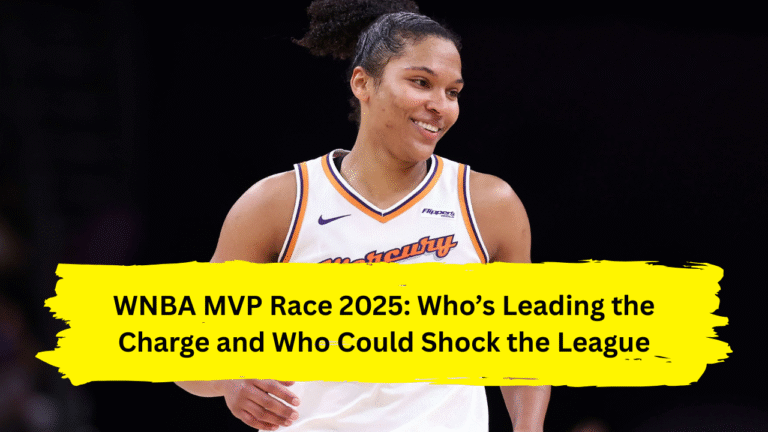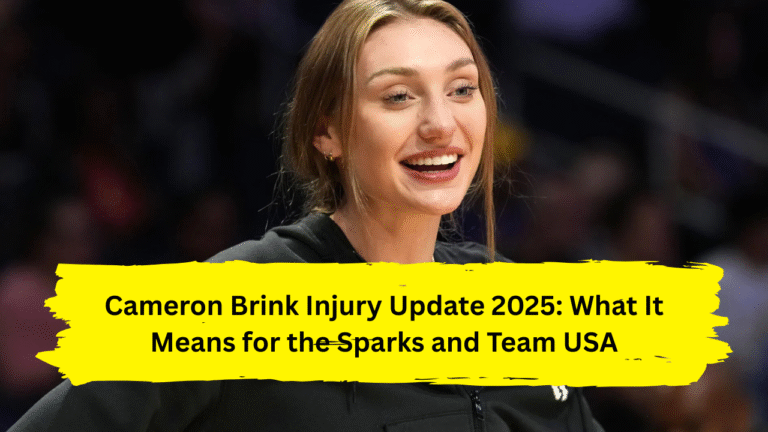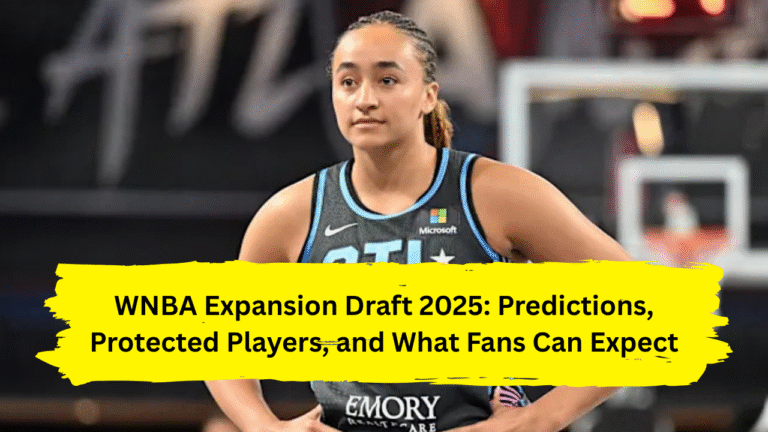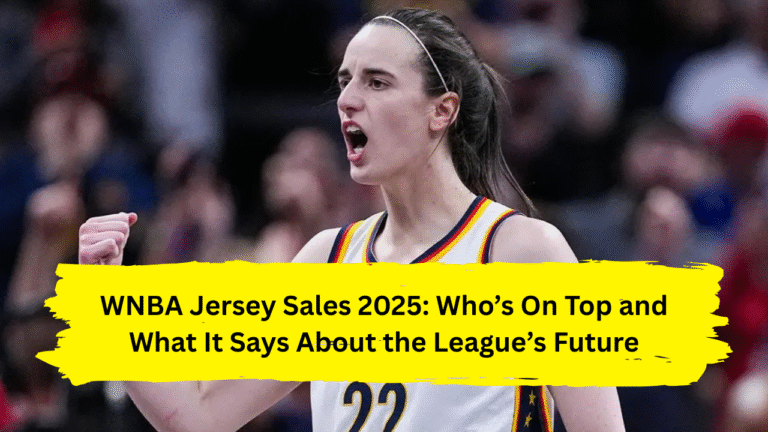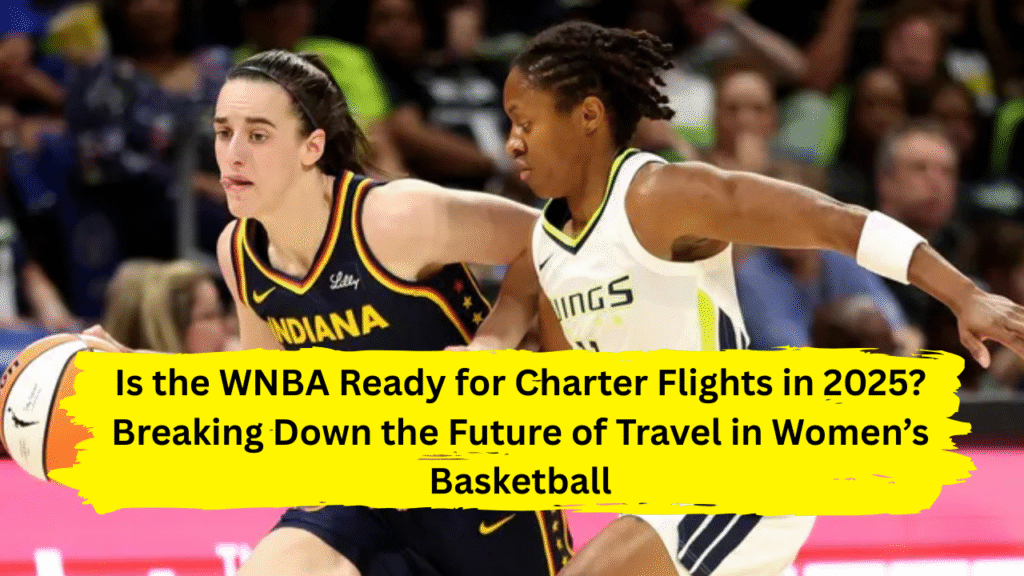
Are WNBA charter flights finally becoming standard in 2025? Here’s the latest on travel upgrades, player reactions, and what fans think.
The question of WNBA charter flights in 2025 has become one of the league’s hottest—and most debated—topics. As viewership spikes, endorsement money pours in, and stars like Caitlin Clark redefine the spotlight on women’s basketball, travel conditions have quickly moved from behind-the-scenes concern to center stage in WNBA news.
Fans, players, and executives alike are asking: Is the league finally ready to say goodbye to commercial flights once and for all?
Let’s explore where things stand, what’s changing, and why this issue matters more than ever.
Why WNBA Travel Conditions Are Under Scrutiny in 2025
For years, WNBA players have voiced concerns about travel:
- Delays on commercial flights
- Lack of rest between games
- Inconsistent arrival times impacting performance
In contrast, NBA players have had access to private travel for decades. The inequality isn’t just glaring—it’s affecting player health, team performance, and the league’s image.
In 2023, the New York Liberty were fined for using unauthorized charter flights. Fast-forward to 2025, and now the WNBA is officially piloting a full charter program, marking a major shift in how seriously travel is being taken.
The WNBA’s New Charter Flight Initiative in 2025
Commissioner Cathy Engelbert confirmed earlier this season that all WNBA teams will receive charter flights for back-to-back games and during the playoffs.
According to Engelbert in a recent interview with The Athletic:
“We’re implementing a multi-phase charter strategy in 2025, with the long-term goal of fully transitioning to charter flights by 2026.”
Key Takeaways from the Charter Plan:
- All playoff games will have guaranteed charter travel.
- Regular season charter flights provided on select back-to-backs.
- Teams will continue to use commercial flights for most regular-season games (for now).
What Players Are Saying About Charter Flights
The conversation around travel isn’t just technical—it’s personal.
Caitlin Clark (Indiana Fever):
“The travel has been a grind, especially with our packed schedule. Having charters for key games helps a ton.”
Breanna Stewart (New York Liberty):
“We’ve been advocating for this for years. It’s about time we get treated like professionals.”
A’ja Wilson (Las Vegas Aces):
“We’re growing the league, bringing fans, bringing revenue. This is the next logical step.”
Across the league, there’s a shared sense of progress—but also a call for full implementation.
TV Ratings and Endorsements Are Driving the Change
The reality is simple: money talks. And in 2025, the WNBA is finally starting to earn big.
- WNBA national broadcasts on ESPN and ABC have averaged 1.7 million viewers, a record high.
- Caitlin Clark’s presence alone is credited with boosting ticket sales and jersey revenue by 86%.
- Brands like Nike, Gatorade, and Hulu have signed multi-million dollar endorsement deals with top WNBA players.
With this increased visibility and sponsorship income, fans and analysts are asking: If there’s money for ad campaigns, why not invest in safer travel?
How Charter Flights Could Impact Team Performance
Travel isn’t just about comfort—it’s about performance.
| Travel Type | Avg. Arrival Time | Recovery Time | Back-to-Back Performance |
|---|---|---|---|
| Commercial Flights | Unpredictable | 12–16 hours | Fatigue-prone |
| Charter Flights | Direct, On-Time | 24+ hours | Higher efficiency |
Teams using charters report better pre-game prep, lower injury rates, and improved game-day focus. In a league where playoff spots are often decided by a game or two, that matters.
Fan Reactions: Social Media Has Opinions
This issue has spilled over into X (formerly Twitter), TikTok, and Reddit threads, where fans are voicing strong opinions.
Fan Quotes:
- “If we can afford Caitlin Clark commercials every 5 minutes, we can afford charters.”
- “Imagine NBA teams flying Southwest. This isn’t just a luxury—it’s a necessity.”
- “Love seeing the WNBA evolve, but it’s time to go all in on player treatment.”
Many fans are using hashtags like #FlyHerFirst and #CharterEqualityWNBA to keep the pressure on league officials.
Why Full-Time Charters in 2026 Are Possible
The 2025 rollout is just the beginning. With collective bargaining discussions scheduled for early 2026, players are expected to push hard for a full charter policy league-wide.
Engelbert says she’s optimistic:
“We’re working toward sustainable solutions with team ownership and league partners. Our vision includes a fully chartered WNBA.”
If that happens, it would make the WNBA the first women’s pro league globally to adopt a full charter policy.
Challenges to Full Implementation
Not everything is smooth flying, though. The biggest obstacles include:
- Cost: Estimates say full charter implementation could run $25–30 million per season.
- Logistics: Coordinating flights across 12 (soon to be 14) markets isn’t simple.
- Equity: Smaller-market teams worry about the financial burden.
Still, with rising revenue and growing public support, these barriers seem more like temporary turbulence than long-term roadblocks.
Final Thoughts: Charter Flights Are the Future of the WNBA
In 2025, WNBA charter flights have moved from wishful thinking to partial reality. It’s a symbol of progress and a necessary step for a league that’s rapidly evolving on and off the court.
If the goal is to build a world-class professional league that respects its athletes, draws in fans, and commands global attention, then full charter travel isn’t optional—it’s inevitable.
✈️ Do you think charter flights should be standard for every WNBA game?
Drop your take in the comments, share this with your basketball-loving crew, and subscribe for more inside stories from the world of women’s basketball 2025.
Also Read: Latest Trending News
External Link: WNBA Official Site
FAQs
1. Are WNBA teams flying charter for all games in 2025?
No, only for playoffs and select back-to-back regular season games. Full charter use is expected by 2026.
2. Why is charter travel important for WNBA players?
It reduces fatigue, improves recovery, and helps with performance—especially with a tight schedule.
3. Who pays for the charter flights in the WNBA?
The league, along with corporate sponsors and team ownership groups, fund the pilot charter programs.
4. What’s Caitlin Clark’s role in this travel change?
Her stardom has increased revenue and attention, creating more pressure to invest in better infrastructure.
5. Will travel improvements be part of the next CBA?
Yes, travel conditions are expected to be a major negotiation point in the upcoming 2026 collective bargaining talks.

